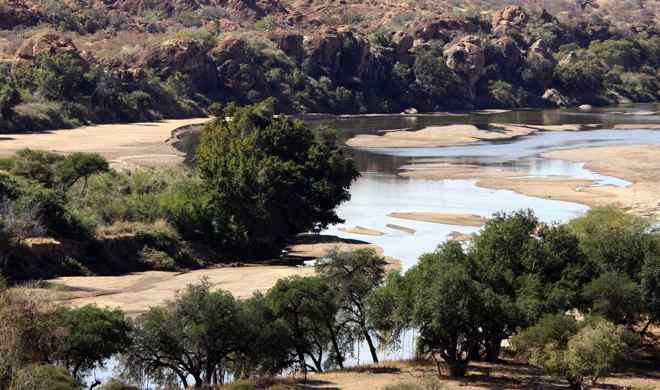Farming in southern Africa is risky business, especially when the weather is working against you. Chapita Ramovha, a subsistence farmer in south Zimbabwe, remembers a time when the Limpopo River—a major agricultural resource in the region—was a “marvel to watch, a source of food and income.” The Limpopo River Basin is now one of the most water-stressed areas in southern Africa, suffering extreme droughts every 10 to 20 years. “It is nothing but a dust river,” Ramovha says.
The effects of a changing climate—rising temperatures, extended droughts, frequent flooding—can be seen worldwide, but the associated risks will be felt most acutely in nations that are highly dependent on agriculture. In much of southern Africa (namely, Lesotho, Zambia, and Zimbabwe), up to 70 percent of the population is employed in smallholder farming, and many of the region’s poor people spend most of their income on food. So, what can be done to help farmers in this already fragile environment adapt to the challenges of climate change?
In Southern African Agriculture and Climate Change, a book published by the International Food Policy Research Institute (IFPRI), scientists assess the climate-induced threats to agriculture facing eight of the region’s countries. Together with partners from the CGIAR Research Program on Climate Change, Agriculture and Food Security and the Food, Agriculture and Natural Resources Policy Network, IFPRI researchers used a variety of projected climate scenarios and different crop models—one assuming no climate-change adaptation methods and one supposing relevant technological improvements—to explore the best course of action for farming in the region from now until 2050.
Maize, a major staple crop in southern Africa, is grown on more than 40 percent of all cultivable land. Based on future modeling, if farmers do not use any adaptation methods (such as rainwater harvesting or planting drought-tolerant crops, for example) in response to climate change, maize yields will drop by 5 percent throughout the region. In some countries, losses will be more severe: roughly 16 percent in South Africa and 25 percent in Lesotho and Swaziland.
The good news is that with technological adaptation methods maize yields could actually rise—by as much as 50 percent. The gap between a 5 percent loss and a 50 percent gain in one of the region’s biggest staple crops can spell the difference between millions of people—producers as well as consumers—falling on one side of the food-security fence or the other. Now, it’s up to policymakers, donors, researchers, and practitioners to identify exactly how to achieve that potential 50 percent gain. Among other policy recommendations, the researchers who contributed to Southern African Agriculture and Climate Change suggest the following critical steps.
1. Design flexible institutions and policies to help farmers cope with climate change.
2. Invest in agricultural research and extension that focuses on climate-specific crop varieties, soil inputs, and water-management practices.
3. Develop and test drought- and heat-tolerant crop varieties that have high-yield potential.
4. Identify ways for livestock to adapt to changes in food sources, particularly in countries like Botswana where pastoralism is a vital part of the economy.
5. Evaluate whether climate change will induce significant migration, and, if so, whether it will likely be toward urban areas or other agricultural zones. If the latter, consider designing new policies to deter encroachment on environmentally sensitive areas.















